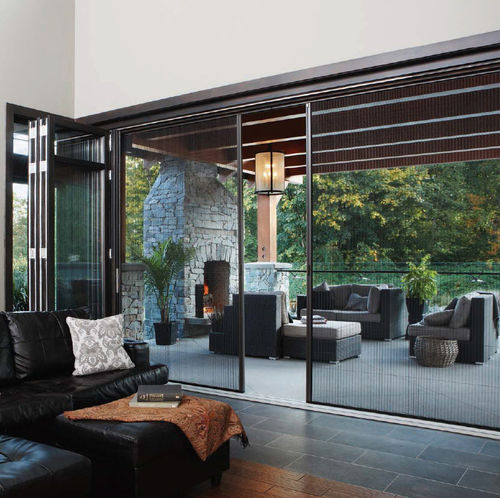Insect screens are an indispensable component of any home, providing a barrier against unwanted pests while allowing fresh air to flow freely. However, selecting the right insect screen for your windows and doors can be a bit more complex than it may seem. With various options available, it’s essential to consider factors such as your specific needs, budget, and aesthetic preferences. In this guide, we’ll walk you through the key considerations to help you make an informed choice.
1. Determine Your Objectives
Before diving into the world of insect screens, it’s crucial to understand your objectives. Ask yourself the following questions:
- What pests are you primarily trying to keep out? Different pests may require different types of screens. For instance, fine mesh screens are ideal for keeping out tiny insects like mosquitoes, while larger mesh screens are suitable for deterring flies and bees.
- Do you have any specific health concerns or allergies? If you or your family members suffer from allergies or respiratory issues, consider screens with finer mesh that can filter out allergens like pollen.
- What is the primary function of the space? Consider whether the area is a high-traffic zone, a bedroom, or a living room. This can influence factors like screen durability, ease of use, and privacy.
2. Types of Insect Screens
There are various types of insect screens to choose from, each catering to different needs:
- Standard Window Screens: These are versatile and suitable for most windows. They are affordable and easy to install.
- Sliding Door Screens: Designed for larger openings, these screens are ideal for sliding patio or porch doors. They offer protection without obstructing the door’s functionality.
- Retractable Screens: These screens roll up or retract when not in use, making them an excellent choice for large openings and areas where you want the screen to be hidden when not needed.
- Magnetic Screens: Easy to install and remove, magnetic screens attach to the frame using magnets. They are a great option for those who want a temporary insect barrier.
3. Mesh Material
The mesh material plays a crucial role in the effectiveness of your insect screen. Common materials include fiberglass, aluminum, and stainless steel. Each has its own set of advantages:
- Fiberglass: Affordable and lightweight, fiberglass mesh screens are suitable for most applications. They are resistant to corrosion and provide good visibility.
- Aluminum: Aluminum screens are durable and long-lasting. They are a bit more expensive but offer excellent protection against pests.
- Stainless Steel: Stainless steel screens are the most durable option and are highly resistant to rust and corrosion. They are ideal for coastal areas or locations with harsh weather conditions.
4. Installation and Maintenance
Consider whether you’ll install the screens yourself or hire a professional. Proper installation is essential to ensure the screens fit snugly and securely, preventing gaps that insects could exploit.
Regular maintenance is also crucial. Check the screens periodically for damage, tears, or holes, and clean them with a soft brush or vacuum attachment to maintain their effectiveness.
5. Aesthetic Considerations
Insect screens come in various colors and styles to match your home’s aesthetic. Choose a color and style that complements your windows and doors to maintain the overall appearance of your home.
In conclusion, choosing the right insect screen involves assessing your specific needs, understanding the types of screens available, selecting the appropriate mesh material, and considering installation and maintenance requirements. With the right choice, you can enjoy a pest-free and comfortable living environment while enhancing the beauty and functionality of your home.


